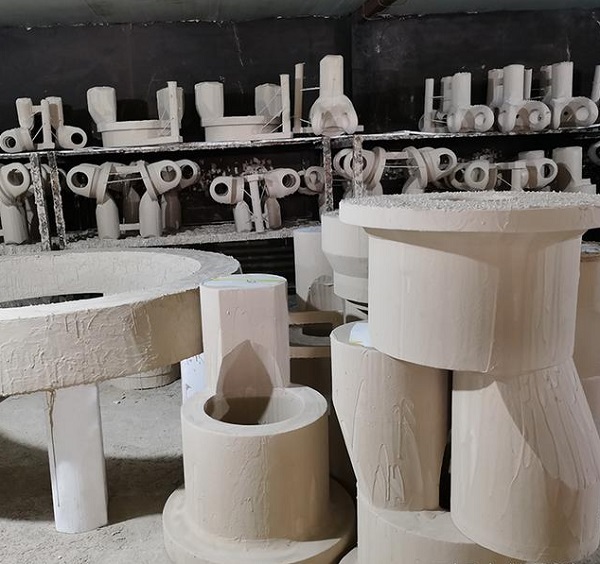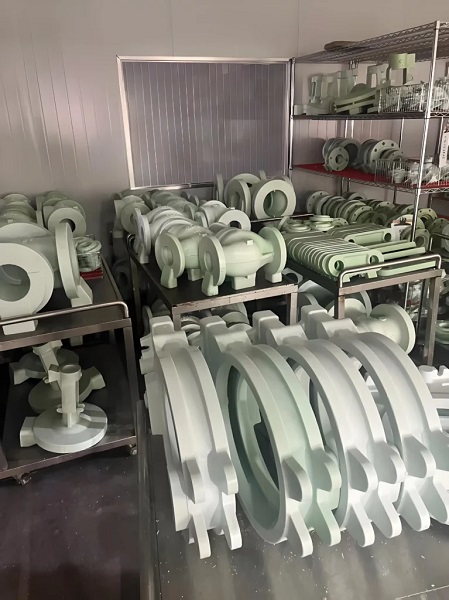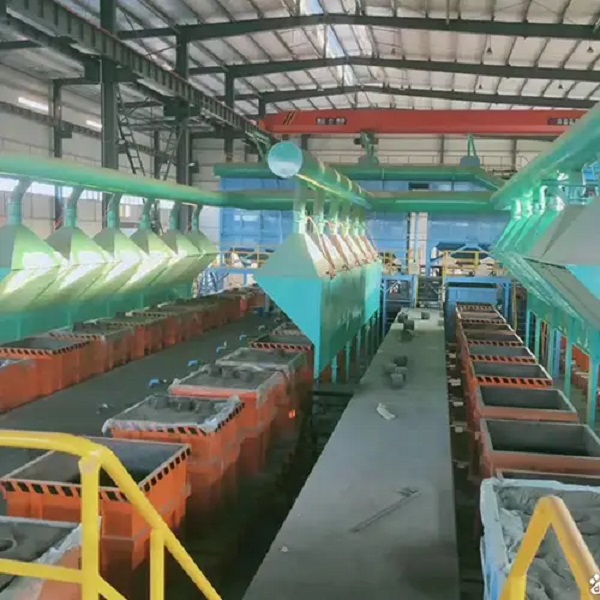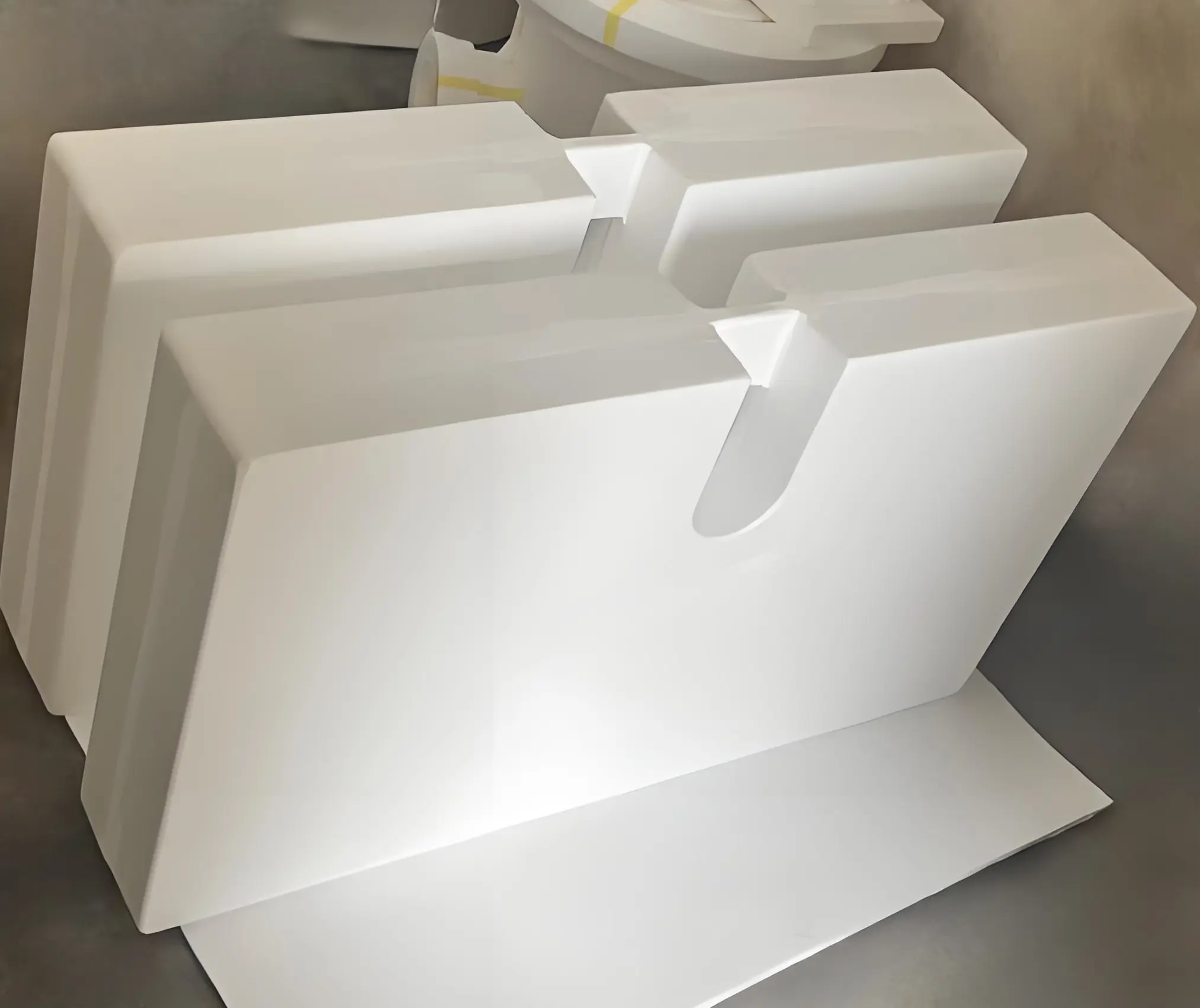Lost foam casting has revolutionized modern manufacturing, offering unprecedented precision and cost-effectiveness for complex metal components. This comprehensive guide explores every aspect of this innovative casting technique, from fundamental principles to advanced applications in industries ranging from automotive to electronics manufacturing, including critical components like OEM alternator housings.
Key Takeaways
• Lost foam casting enables production of complex geometries impossible with traditional methods
• The process eliminates draft angles and achieves dimensional accuracies within ±0.1-0.5mm
• Foam patterns vaporize completely during metal pouring, leaving no residue in final castings
• Material efficiency improves by 15-30% compared to conventional sand casting methods
• Applications span automotive, aerospace, marine, and industrial equipment manufacturing
• Quality control requires systematic monitoring of foam properties, coating application, and pouring parameters
What is Lost Foam Casting?
Lost foam casting, also known as evaporative pattern casting, represents a breakthrough in metal casting technology. This process utilizes expandable polystyrene foam patterns that vaporize when molten metal contacts them, leaving behind perfectly formed metal components. The technique eliminates traditional core-making and pattern removal challenges while delivering exceptional dimensional accuracy and surface finish quality.
The process begins with creating a foam pattern identical to the desired final product. When molten metal pours into the mold, the foam pattern evaporates instantly, allowing the metal to fill every intricate detail of the original design. This innovative approach enables manufacturers to produce complex geometries that would be impossible or prohibitively expensive using conventional casting methods.

Understanding the Lost Foam Casting Process
The lost foam casting process involves several critical stages that determine the final product’s quality and precision. Each step requires careful attention to detail and proper execution to achieve optimal results.
Lost Foam Casting Process Parameters
| Parameter | Range | Optimal Value | Impact on Quality |
|---|---|---|---|
| Foam Density (kg/m³) | 15-25 | 18-22 | Surface finish, dimensional accuracy |
| Pouring Temperature (°C) | 1450-1650 | 1520-1580 | Complete foam vaporization |
| Vacuum Level (kPa) | 20-80 | 40-60 | Gas removal efficiency |
| Coating Thickness (mm) | 0.5-2.0 | 0.8-1.2 | Surface quality, defect prevention |
| Sand Permeability (AFS) | 80-150 | 100-120 | Gas evacuation rate |
Pattern Creation and Assembly
• Foam cutting and shaping: Patterns are created using CNC hot wire cutting, molding, or hand carving techniques
• Pattern assembly: Multiple foam sections are bonded together using specialized adhesives
• Gating system attachment: Runners, gates, and risers are attached to ensure proper metal flow
• Surface preparation: Patterns receive protective coatings to prevent premature degradation
Molding and Pouring Procedures
• Sand preparation: Unbonded sand surrounds the foam pattern, providing structural support
• Vacuum application: Negative pressure maintains sand compaction during pouring
• Metal pouring: Molten metal vaporizes the foam pattern while filling the cavity
• Cooling and solidification: Controlled cooling prevents casting defects and ensures proper metallurgy
Finishing Operations
• Sand removal: Castings are separated from surrounding sand media
• Gating system removal: Excess material is cut away and finished
• Surface treatment: Final machining, grinding, or coating as required
• Quality inspection: Dimensional verification and defect analysis
Lost Foam Casting Materials: Choosing the Right Components
Lost foam casting material selection significantly impacts both process success and final product quality. Understanding material properties and compatibility ensures optimal casting results according to industry standards and specifications.
The primary materials in lost foam casting include the foam pattern material, protective coatings, sand media, and the cast metal itself. Each component plays a crucial role in achieving dimensional accuracy, surface finish, and mechanical properties in the final casting.
Table 2: Foam Material Comparison Chart
| Foam Type | Density (kg/m³) | Decomposition Temp (°C) | Surface Finish | Cost Index | Best Applications |
|---|---|---|---|---|---|
| Standard EPS | 15-20 | 240-260 | Good | 1.0 | General casting |
| High-Temp EPS | 18-23 | 280-300 | Very Good | 1.3 | Complex geometries |
| EPMMA | 20-25 | 350-400 | Excellent | 2.1 | Precision components |
| Modified EPS | 16-22 | 260-280 | Good | 1.1 | High-volume production |
Foam Pattern Materials
• Expanded polystyrene (EPS): Most common choice offering excellent machinability and vaporization characteristics
• Expanded polymethyl methacrylate (EPMMA): Higher temperature resistance for challenging applications
• Density variations: Range from 15-25 kg/m³ depending on application requirements
• Bead fusion quality: Proper fusion prevents pattern degradation during handling
Protective Coatings and Binders
• Refractory coatings: Provide thermal barrier and improve surface finish
• Permeability control: Allows gas escape while maintaining pattern integrity
• Carrier liquid systems: Water-based or alcohol-based depending on foam compatibility
• Additive packages: Improve coating adhesion, suspension stability, and drying characteristics
Sand and Molding Materials
• Silica sand: Primary molding medium offering good permeability and thermal properties
• Grain size distribution: Optimized for gas permeability and surface finish requirements
• Refractory alternatives: Chromite, zircon, or olivine sand for specialized applications
• Bonding agents: Minimal binder content maintains collapsibility after casting
Exploring the Lost Foam Method: Techniques and Variations
The lost foam method encompasses various approaches tailored to specific manufacturing requirements and product characteristics. Understanding these variations enables optimal process selection for different applications.
Traditional lost foam techniques focus on single-pattern castings with straightforward geometries. Advanced methods incorporate multiple patterns, complex assemblies, and specialized materials to address challenging design requirements and production volumes.
Conventional Lost Foam Approach
• Single-pattern casting: Individual foam patterns for simple geometries
• Gravity pouring: Relies on gravitational force for mold filling
• Atmospheric pressure: Standard molding without vacuum assistance
• Manual pattern handling: Labor-intensive but flexible for low-volume production
Advanced Process Variations
• Vacuum-assisted molding: Improves dimensional accuracy and reduces casting defects
• Counter-gravity filling: Enhanced metal flow control for complex geometries
• Cluster casting: Multiple patterns on single gating system for production efficiency
• Automated pattern handling: Robotic systems for high-volume manufacturing
Hybrid Manufacturing Approaches
• Combined machining operations: Integrated finishing reduces secondary processing
• Insert casting integration: Combines lost foam with traditional core placement
• Multi-material applications: Incorporates different alloys in single casting
• Real-time process monitoring: Advanced sensors optimize casting parameters
Lost Foam Casting Foam Types: Material Selection Guide
Lost foam casting foam type selection directly influences casting quality, process efficiency, and production costs. Different foam formulations offer specific advantages for various applications and operating conditions.
Understanding foam characteristics enables manufacturers to optimize pattern performance, minimize defects, and achieve consistent casting quality. Proper foam selection considers factors including pattern complexity, metal temperature, production volume, and dimensional tolerance requirements.
Standard EPS Foam Classifications
• General purpose grades: Suitable for most casting applications with balanced properties
• High-temperature resistant: Enhanced thermal stability for elevated pouring temperatures
• Fine-cell structures: Superior surface finish and dimensional accuracy capabilities
• Modified formulations: Specialized additives improve specific performance characteristics
Specialty Foam Materials
• EPMMA alternatives: Higher decomposition temperature for demanding applications
• Flame-retardant formulations: Enhanced safety characteristics for specific environments
• Colored identification systems: Visual coding for quality control and process tracking
• Pre-coated foam options: Integrated protective layers reduce processing steps
Foam Density and Structure Considerations
• Low-density options: Reduced pattern costs with adequate structural integrity
• High-density alternatives: Superior dimensional stability and surface quality
• Bead size optimization: Balances pattern strength with vaporization characteristics
• Anisotropic properties: Directional characteristics affect pattern performance
Lost Foam Casting Products: Applications and Advantages
Lost foam casting products span numerous industries and applications, demonstrating the versatility and effectiveness of this advanced manufacturing technique. The process enables production of components that combine complex geometries with superior mechanical properties and cost-effective manufacturing.
Modern lost foam casting serves industries including automotive, aerospace, marine, electronics, and industrial equipment manufacturing. The technique particularly excels in producing components with intricate internal passages, thin-walled sections, and complex three-dimensional geometries that challenge conventional casting methods.

Automotive Industry Applications
• Engine components: Cylinder heads, intake manifolds, and transmission housings
• Structural elements: Suspension components, frame sections, and mounting brackets
• Powertrain systems: Differential housings, oil pans, and accessory drive components
• Electronic housings: Control modules, sensor housings, and connector assemblies
Industrial Equipment Manufacturing
• Pump and valve bodies: Complex internal flow passages with superior surface finish
• Heat exchanger components: Intricate cooling channels and thermal management systems
• Agricultural machinery: Implement components requiring durability and precision
• Construction equipment: Hydraulic components and structural elements
Specialized Applications
• Marine hardware: Propeller components and hull fittings with corrosion resistance
• Aerospace components: Lightweight structures with high strength-to-weight ratios
• Electronics manufacturing: Precision housings for sensitive electronic equipment
• Art and architectural elements: Complex decorative components with fine detail reproduction
Process Advantages and Limitations
Lost foam casting offers significant advantages over traditional casting methods while presenting specific challenges that require careful consideration during process planning and implementation.
Key Process Benefits
• Dimensional accuracy: Eliminates draft angles and achieves tight tolerances
• Design flexibility: Enables complex internal geometries impossible with conventional methods
• Surface finish quality: Produces smooth surfaces requiring minimal secondary processing
• Material efficiency: Reduces machining requirements and material waste
Process Considerations
• Pattern costs: Initial tooling investment may be higher for simple geometries
• Production volume optimization: Most cost-effective for medium to high-volume applications
• Alloy compatibility: Process parameters require adjustment for different metals
• Quality control requirements: Demands consistent process monitoring and control
Quality Control and Troubleshooting
Successful lost foam casting requires comprehensive quality control measures and systematic troubleshooting approaches to maintain consistent product quality and process efficiency. Research by technical institutions has established standardized approaches for defect prevention and quality assurance.
Common Casting Defects and Solutions
• Fold defects: Caused by incomplete foam vaporization or poor gas evacuation
• Surface roughness: Results from inappropriate coating application or foam degradation
• Dimensional variations: Addressed through improved pattern handling and molding practices
• Inclusions and porosity: Controlled through proper gating design and pouring procedures
Process Monitoring Techniques
• Temperature control: Critical for consistent foam vaporization and metal flow
• Vacuum system performance: Ensures adequate gas removal during casting
• Pattern inspection protocols: Verifies foam quality before molding operations
• Metallurgical testing: Confirms mechanical properties and microstructure quality
Conclusion
Lost foam casting represents a transformative manufacturing technology that continues advancing precision metal forming capabilities. This comprehensive process offers unique advantages for producing complex components across diverse industries while maintaining cost-effectiveness and superior quality standards.
The technique’s ability to create intricate geometries with excellent dimensional accuracy makes it an invaluable tool for modern manufacturing. From simple components to complex assemblies, lost foam casting delivers consistent results that meet demanding performance requirements.
For manufacturers seeking reliable lost foam foundry services, SHENGRONG provides comprehensive casting solutions backed by advanced technology and extensive industry experience. Our commitment to quality and innovation ensures optimal results for every project requirement.
Frequently Asked Questions (FAQ)
What is the difference between lost foam casting and traditional sand casting?
Lost foam casting uses expandable polystyrene foam patterns that vaporize during metal pouring, eliminating the need for pattern removal and enabling complex internal geometries. Traditional sand casting requires removable patterns and cores, limiting design complexity and requiring draft angles.
How accurate are lost foam casting dimensions?
Lost foam casting typically achieves dimensional tolerances of ±0.1-0.5mm for most applications, significantly better than conventional sand casting methods. The process eliminates draft requirements and reduces machining allowances.
What metals can be cast using the lost foam method?
Lost foam casting works effectively with aluminum alloys, iron, steel, and various specialty alloys. The process parameters require adjustment based on metal pouring temperature and foam vaporization characteristics.
What are the main advantages of lost foam casting over other methods?
Key advantages include elimination of draft angles, superior dimensional accuracy, ability to cast complex internal geometries, reduced machining requirements, and improved material utilization compared to traditional casting methods.
How long does foam pattern production take?
Foam pattern production time varies from hours for simple hand-cut patterns to several days for complex machined or molded patterns. CNC machining and injection molding enable rapid pattern production for higher volumes.
What causes surface defects in lost foam castings?
Common surface defects result from incomplete foam vaporization, inadequate coating application, poor gas evacuation, or inappropriate pouring parameters. Proper process control and quality monitoring prevent most defect occurrences.
Is lost foam casting cost-effective for small production runs?
Lost foam casting becomes most cost-effective for medium to high-volume production where tooling costs distribute across multiple parts. For small runs, the process may be justified when complex geometries eliminate expensive machining operations.
What quality standards apply to lost foam casting?
Industry standards include dimensional tolerance specifications, surface finish requirements, and defect acceptance criteria. Many applications reference automotive, aerospace, or general casting standards for quality requirements.





